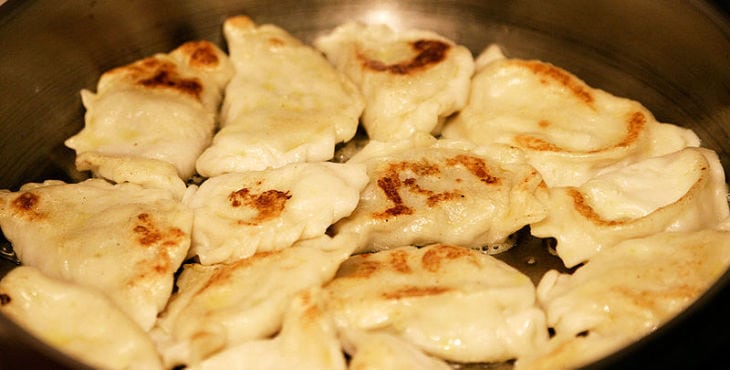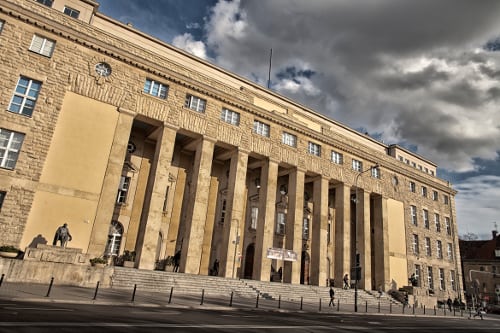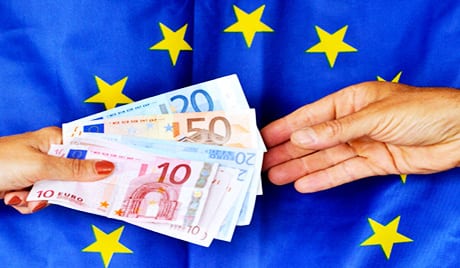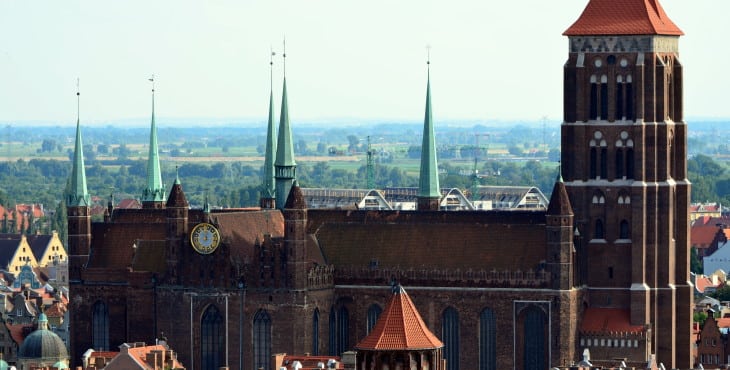Blog post by Erik Witsoe – a photographer living in Poznan
It seems that in the very recent weeks, the topic of conversation tends to be one of nostalgia. Exactly that, actually. The term nostalgia describes a sentimentality for the past, typically for a period or place with happy personal associations. And that seems to be the accurate description for a lot of the thoughts that I hear spoken by those surrounding me. Perhaps it is the Holiday season that spurs most of it on….or perhaps I have developed a better listening ear for it. Either way it has been nothing but interesting.

I run a small coffee shop in the Pasaz Apollo here in Poznan. Probably the greatest “job” that I could ever ask for. I get to spend my day chatting with all kinds of people from all kinds of backgrounds and from all over the world (literally). When I am not busy chatting and making coffee I also wander through the city streets photographing the beauty of Poznan and Poland. And in so doing I have the opportunity to try to connect with how I see the city that I now call home, how it makes me feel, the deep sense of history that presents itself to me and ultimately present the image, hopefully with some of those feelings conveying to you, the viewer.
The thoughts of nostalgia have been creeping into the conversations and emails that I receive for some time now and although I too have a proclivity towards being nostalgic, I wasn’t really fully understanding how it works here nor of the importance of sentimentality or nostalgia as a part of the culture. Some of the emails describe my photographic work as “you have managed to capture how I see and think of Poznan” or “your images bring me back to my childhood, thank you” or from afar “I miss my Poznan and thank you for capturing it in a way that matches my memory of it”…and more.

The conversations that occur in Bigfoot Coffee Shop (my little store) on a regular basis also carry the tone of nostalgia or are sometimes just heavily laced with it. Sometimes it comes out as a deep longing for the familiar past, a past that was more familiar and easier than the fast pace of today’s world. Sometimes it is a story, romanticizing a particular place, time, feeling or occurrence in ones past. Either way, or however it emerges it is always with sincerity and conviction. I am told more about the History of Poland and Europe on a daily basis than one could possibly imagine (don’t worry, I love it). Or sometimes it emerges as the un-acceptance of a particular newness that has emerged conflicting with how the new doesn’t quite measure up to the past. Case in point: the new MM Gallery is a hot topic among many. There seems to be a general thought that it doesn’t quite look right on St. Marcin street, that it doesn’t match the “vibe” or “feel” or “memory” of the street and so it becomes monstrous in how it appears and ultimately has soiled and tainted the feel of the area. I listen to it all. And absorb what I can.

As I stated before, I have a natural draw to nostalgia. I frequently will reread books that I have enjoyed, watch movies that I have seen and daydream about places, people and times in my past. And, for some reason I do it even more here…..I often find myself with thoughts of almost déjà vu like occurrence happening, like I have been here before, or a street with certain light will spur a memory long forgotten from a much earlier time and a comfort begins to blanket me. I allow these thoughts, welcome them in fact, as I am walking these streets photographing what presents itself to me. I do not “set up” my shots, but more try to let the feelings guide me when I am in a particular area. I often chase light and allow it to lead me to the beauty it exposes and reveals. Fleeting thoughts guided by inner voices.

There are many differences between our two cultures and also many similarities. For now, the main thought that has crossed my mind is of nostalgia and how it plays such an important role here in Poland. Where someone may be thought of as “negative” here and is bemoaning today while romanticizing the past because the past offers comfort for being already known, we Americans tend to do the same but look to the future for comfort. We tend to glamorize the future and try to mould it to fit our needs. The past here is very much alive in the present, it is orated to others by storytelling to the young, family histories, personal histories are often spoken of with a little glimmer in the eye and as they are being told a portion of life is again relived. In the states, we do very similar things, but when describing the past it also becomes about the future….and the future is what drives us. There are so many sayings that reflect this, things that I have heard my entire life and at some point no longer hear because they have been engrained into my being. Sayings like “Keep your eye on the horizon” “tell me your 3, 5 and 10 year plans” “what do you see yourself doing in the future” “don’t look back” “move on and pick up” etc, etc, etc.

In my work as a photographer and artist, I find myself drawn to these ideas of nostalgia and how I can incorporate them into my work. What began as an unintentional progression has become the idea behind a lot of my work lately. I often incorporate the lone figure walking, going about their business and somehow it becomes a reflection of how I see myself here wandering these streets. I am far from alone, but often when I am going to work I am alone, going about my business and sorting the thoughts that begin the day. Not only do I have an affinity for nostalgia, I actually deeply appreciate it and love how it displays itself here. Recently I have begun to think that I actually fit into life here more simply by the fact that I DO have an appreciation for nostalgia and sentimentality, something that I never quite had time to really explore in the States.

It is now Christmas time and this is my favorite time of the year here in Poland. I have always loved this holiday in the States, but in recent years have not enjoyed it as much as I had in the past. It has become far too busy, too much consumerism and not enough tradition. Now that I am in Poland, I again find myself truly loving and enjoying the essence of the Holidays and look forward to the time of gathering because it reminds me of when I grew up and brings back memories of childhood magic and the love everyone had time for. And for me, the past has become the present and I still look forward to the future while enjoying each and every moment that passes.
I really love being here in Poznan and I am constantly reminded by how remarkable, challenging, beautiful, invigorating and inspiring it truly is. In the last two years I have learned more about myself than in the last 10 in the States. Thank you all for the amazing welcome.
About the author
 Name: Erik Witsoe
Name: Erik Witsoe
Place of stay: Poznań
Nationality: American
Reason for being in Poland: Fiancée
Main focus of the blog: My life in Poland
The most liked thing in Poland: Life
Websites: Erik Witsoe photography
About: Born and raised in Seattle, Washington and currently living in Poznan, Poland with my fiancée. My background is in Fine Arts, specializing in Graphite work. Several years ago I picked up the camera with the intent of learning how to use the DSLR….I haven’t looked back. Photography, for me, has been a gift since day one. It has allowed me to express how I see the world through my own perspective while utilizing everything that I have been taught as an artist. Everyday I find new sources for inspiration all around me while wandering the streets of Poznan or throughout this beautiful country….. my visual sense has never felt so alive! When I am not out capturing all of the beauty that I see everyday, I also run a small coffee shop in the Pasaz Apollo here in Poznan (Bigfoot Coffee Shop). and get the opportunity to meet incredible people who constantly impress and inspire me everyday….












































 Name: Erik Witsoe
Name: Erik Witsoe